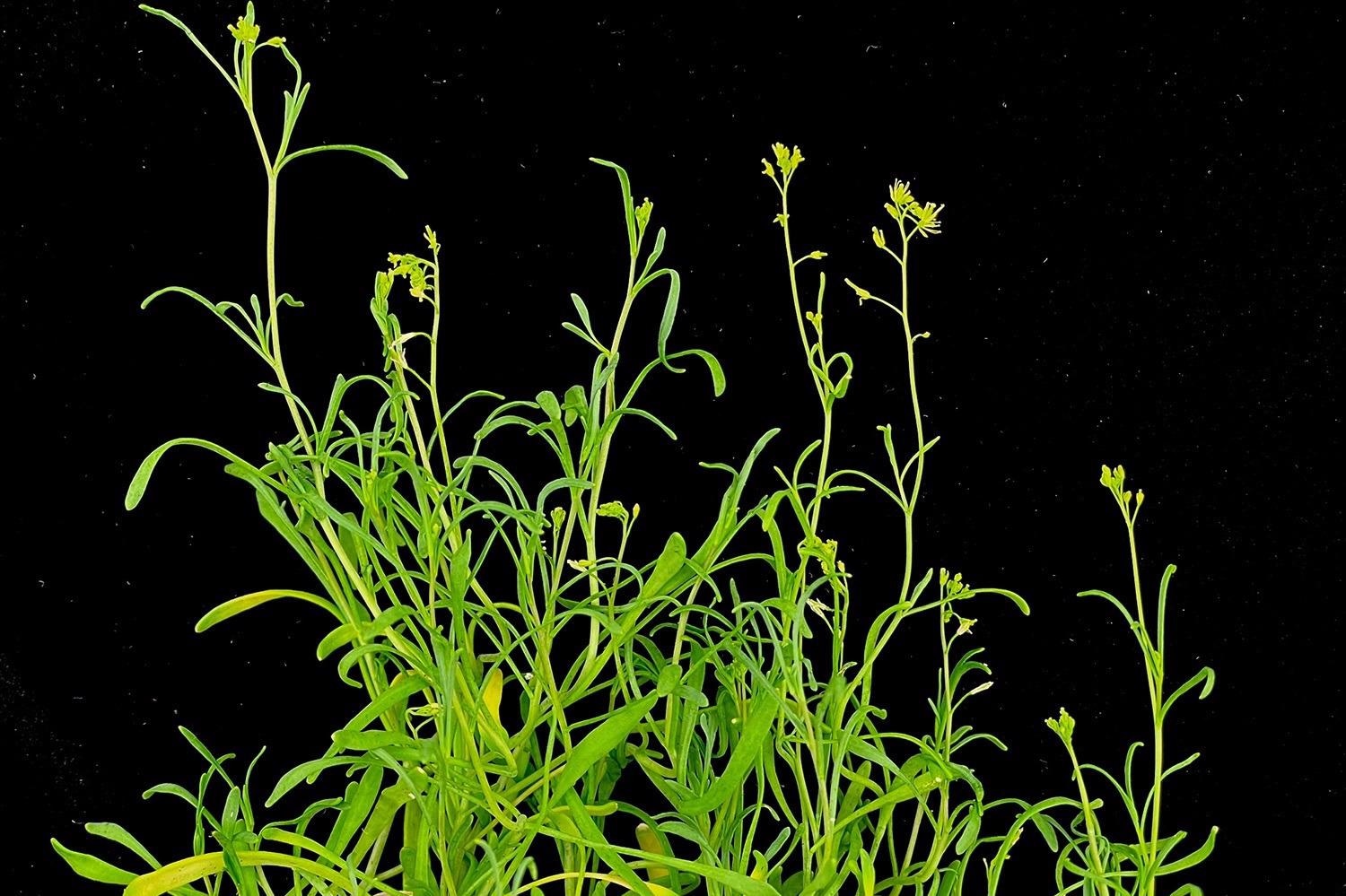Most plants strive to preserve resources when they are exposed to circumstances that are excessively dry, salty, or cold. To hold in water, they send out fewer leaves and roots and seal their pores. Plants will ultimately die if their conditions do not improve.
 Schrenkiella parvula is a plant that can grow—even thrive—in extremely salty conditions. Researchers in the Dinneny Lab study this plant to understand this special adaptation, and how they might be able to modify other plants to withstand similarly stressful environments. Image credit: José Dinneny.
Schrenkiella parvula is a plant that can grow—even thrive—in extremely salty conditions. Researchers in the Dinneny Lab study this plant to understand this special adaptation, and how they might be able to modify other plants to withstand similarly stressful environments. Image credit: José Dinneny.
Extremophytes, on the other hand, have developed to deal with extreme environments. Schrenkiella parvula, a scraggly, branching mustard family member, not only survives but flourishes in situations that would kill most plants. It grows near the Turkish coasts of Lake Tuz, where the salt content of the water can be six times that of the ocean.
Researchers from Stanford University discovered that Schrenkiella parvula develops quicker under these stressful conditions, according to a recent report published in Nature Plants.
Most plants produce a stress hormone that acts like a stop signal for growth. But in this extremophyte, it’s a green light. The plant accelerates its growth in response to this stress hormone.”
José Dinneny, Study Senior Author and Associate Professor, Biology, Stanford University
Dinneny and research colleagues are researching Schrenkiella parvula to learn more about how some plants deal with stress. Their findings might help scientists in developing crops that can flourish in low-quality soil and respond to climate change stresses.
With climate change, we can’t expect the environment to stay the same. Our crops are going to have to adapt to these rapidly changing conditions. If we can understand the mechanisms that plants use to tolerate stress, we can help them do it better and faster.”
Ying Sun, Study Lead Author and Postdoctoral Researcher, Salk Institute
Sun holds a doctorate from Stanford University.
An unexpected response
The Brassicaceae family includes cabbage, turnips, broccoli, and other essential food crops. Schrenkiella parvula is a member of this family. It would be beneficial if these crops could weather or even thrive during droughts in locations where climate change is predicted to increase the duration and intensity of droughts.
Plants generate abscisic acid, or ABA, when they are exposed to dry, salty, or cold circumstances, all of which cause water-related stress. This hormone stimulates certain genes in the plant, effectively instructing it on how to respond.
The researchers looked at how ABA affected many plants in the Brassicaceae family, including Schrenkiella parvula. The roots of Schrenkiella parvula grew substantially quicker than the roots of other plants, which slowed or stopped growing.
Schrenkiella parvula is related to the other plants in the research and has a genome that is very similar in size, but ABA activates various parts of its genetic code to cause it to behave in a completely different way.
“That rewiring of that network explains, at least partially, why we’re getting these different growth responses in stress-tolerant species,” noted Dinneny.
Engineering future crops
Comprehending this stress response—and the ways to engineer it in other species—could help more than just food crops, according to Dinneny. Schrenkiella parvula is also linked to several oilseed species that might be genetically modified and utilized as long-term sources of jet fuel or other biofuels. There would be more land accessible for cultivation if these plants could be modified to flourish in harsher environments.
You want to be growing bioenergy crops on land that is not suitable for growing food—say, an agricultural field that has degraded soil or has accumulated salinity because of improper irrigation. These areas are not prime agricultural real estate, but land that would be abandoned otherwise.”
José Dinneny, Study Senior Author and Associate Professor, Biology, Stanford University
Dinneny and research colleagues are still investigating the network of reactions that might help plants in surviving in extreme conditions. Scientists will try to build similar plants to be able to accomplish the same by manipulating which genes are triggered by ABA now that researchers know how Schrenkiella parvula maintains its development in the face of little water and excessive salt.
“We’re trying to understand what the secret sauce is for these plant species—what allows them to grow in these unique environments, and how we can use this knowledge to engineer specific traits in our crops,” Dinneny concluded.
Source:
Journal reference:
Sun, Y., et al. (2022) Divergence in the ABA gene regulatory network underlies differential growth control. Nature Plants. doi.org/10.1038/s41477-022-01139-5.